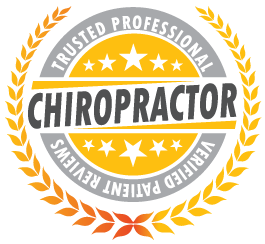As summer ends and children prepare to head back to school, parents often find themselves focused on new school supplies, updated wardrobes, and adjusted schedules. However, one crucial aspect that can be overlooked is the health and well-being of their children’s spines. The transition from summer activities to school routines can have a significant impact on a child’s posture and overall spinal health. Here are some essential chiropractic tips to help ensure your kids have a healthy and pain-free school year.
Backpack Safety
One of the most common sources of back pain in school-aged children is improper backpack use. Heavy or improperly worn backpacks can cause strain on the spine and muscles. Here’s how to ensure your child’s backpack is safe:
Choose the Right Backpack
Select a backpack that features wide, padded shoulder straps and a padded back. These elements are crucial as they help in evenly distributing the weight of the backpack across the shoulders and back. This reduces strain on specific muscles and the spine.
 Pack Light as You Go Back-to-School
Pack Light as You Go Back-to-School
It’s essential to encourage your child to pack only what is necessary. The weight of the backpack should ideally be limited to 10-15% of your child’s body weight. Packing lighter not only reduces the load on the spine but also minimizes the risk of overexertion and strain.
Wear It Properly
Proper wearing of the backpack is key to minimizing the risk of back pain. Both shoulder straps should always be used, as this helps distribute the weight evenly. Adjust the straps so that the backpack sits snugly against your child’s back without sagging. If the backpack includes chest and waist straps, make sure to use them as well. These additional straps further stabilize the backpack and reduce the strain on the shoulders and back muscles.
Maintain Good Posture
Good posture plays a vital role in maintaining spinal health, particularly during extended periods of sitting, such as those spent in classrooms. Proper posture not only supports the natural alignment of the spine but also helps prevent muscle strain and fatigue. For children, who spend a significant portion of their day seated at desks or using digital devices, learning, and practicing good posture habits are essential.
Sit Up Straight
Emphasize the importance of sitting with a straight back, shoulders pulled back, and feet flat on the floor. This posture helps maintain the natural curve of the spine, reducing strain on the back muscles and ligaments.

Screen Height When Back-to-School
If your child uses a computer or tablet, ensure that the screen is positioned at eye level. This setup helps prevent neck strain and encourages a more neutral posture. Adjusting the screen height can also promote better ergonomics and overall comfort during prolonged use.
Frequent Breaks
Encourage your child to take regular breaks from sitting. Every 30-60 minutes suggest they stand up, stretch their arms and legs, and move around. These breaks alleviate pressure on the spine, improve circulation, and reduce the risk of developing musculoskeletal discomfort from prolonged sitting.
Ergonomic Study Areas for the Back-to-School Season
Creating an ergonomic study area at home is essential for safeguarding your child’s spinal health and reducing the likelihood of developing back and neck pain. A well-designed study environment promotes proper posture and comfort during extended periods of studying or using digital devices. Here’s how you can achieve this:
Proper Chair and Desk
It’s essential to provide your child with a chair that offers adequate lower back support and promotes good posture. Look for chairs with adjustable height and lumbar support features. The desk should be at a height that allows your child to maintain a comfortable sitting position with their elbows close to a 90-degree angle when typing or writing.
Foot Support
 If your child’s feet do not comfortably reach the floor when seated, consider using a footrest. A footrest helps in keeping their knees at approximately a 90-degree angle, promoting proper blood circulation and reducing strain on the lower back and legs.
If your child’s feet do not comfortably reach the floor when seated, consider using a footrest. A footrest helps in keeping their knees at approximately a 90-degree angle, promoting proper blood circulation and reducing strain on the lower back and legs.
Good Lighting
Ensure that the study area is well-lit with appropriate lighting. Proper lighting reduces eye strain and encourages your child to maintain a better sitting posture. Position desk lamps or overhead lighting to minimize glare on screens and reading materials, which can strain the eyes and lead to discomfort.
Encourage Physical Activity
Regular physical activity is not only crucial for overall well-being but also plays a significant role in maintaining a healthy spine, especially for children. Encouraging children to be physically active from a young age sets the foundation for a lifetime of health and wellness.
Daily Exercise
It’s recommended that children aim for at least 60 minutes of physical activity every day. This can include activities such as brisk walking, riding a bike, swimming, playing soccer, and basketball, or engaging in other sports they enjoy. These activities not only strengthen muscles and bones but also promote cardiovascular health and improve coordination.
 Stretching
Stretching
Incorporating regular stretching exercises into their routine helps improve flexibility and mobility, which is essential for preventing muscle tightness and reducing the risk of injuries. Encourage your child to stretch major muscle groups, such as their hamstrings, quadriceps, calves, and back, both before and after physical activities.
Limit Screen Time
To combat sedentary behavior, encourage outdoor play and limit the time your child spends on electronic devices, such as smartphones, tablets, and computers. Outdoor play not only promotes physical activity but also provides exposure to natural light and fresh air, which are beneficial for overall health and well-being.
Regular Back-to-School Chiropractic Check-Ups
Regular chiropractic check-ups are comparable to routine dental visits in their importance for maintaining spinal health. Just as regular dental check-ups are essential for preventing cavities and maintaining oral hygiene, chiropractic visits are crucial for ensuring the alignment and functionality of the spine.
Early Detection
Just as dental check-ups catch cavities before they worsen, regular visits to a chiropractor can detect and address spinal misalignments early. These misalignments, often caused by daily activities, sports injuries, or poor posture, can lead to discomfort, reduced mobility, and long-term spinal issues if left untreated. Chiropractors use diagnostic techniques to identify these issues and provide adjustments to realign the spine, relieving pressure on nerves and promoting proper function.

Customized Care
Chiropractors offer personalized care plans tailored to your child’s specific needs and spinal health goals. They may recommend exercises, stretches, or ergonomic adjustments to support spinal health between visits. This individualized approach ensures that your child receives targeted support to maintain a healthy spine and prevent future problems.
Preventative Care Before You Go Back-to-School
Beyond addressing current issues, regular chiropractic adjustments contribute to preventive care. By maintaining spinal alignment, chiropractic care helps reduce the likelihood of injuries during physical activities, supports optimal posture, and enhances overall well-being. This proactive approach fosters better musculoskeletal health as your child grows and engages in various activities.
As your child heads back to school, keeping these chiropractic tips in mind can help ensure they maintain a healthy spine and overall well-being. By focusing on proper backpack use, good posture, ergonomic study areas, regular physical activity, and routine chiropractic check-ups, you can help your child have a pain-free and successful school year. Investing in your child’s spinal health today can lead to a healthier and happier future. For more personalized advice, to schedule a chiropractic check-up, or to contact us, go to our homepage to take the first step towards personalized health and wellness.





